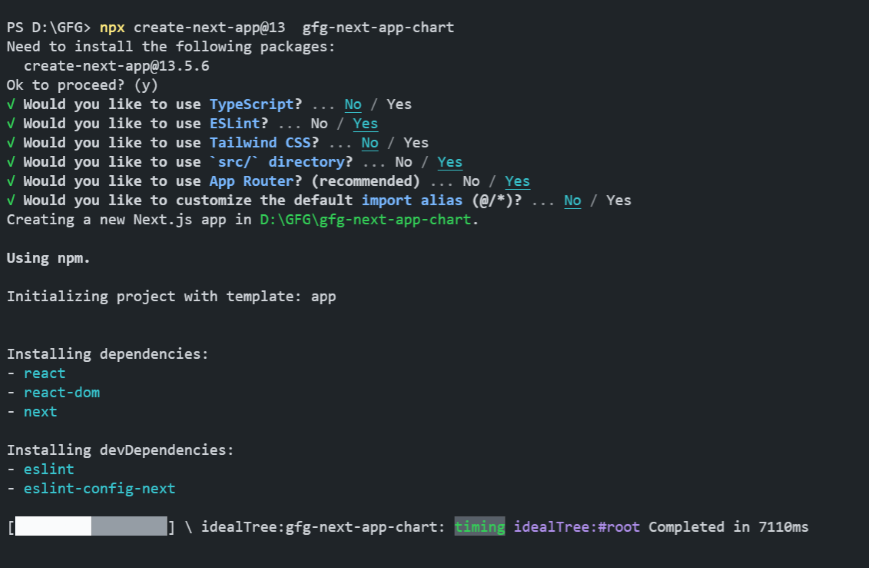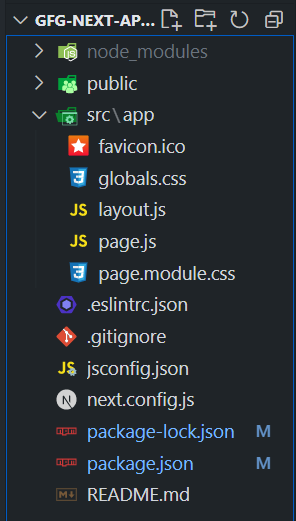
|
|
Chart.js in Next.js is the package used to create interactive and visually appealing charts, such as line charts, bar charts, and more, seamlessly integrated into Next.js applications. In this article, we will explore the demonstration of various charts in the NextJS application. Table of Content Steps to Create the Next.js ApplicationStep 1: Set up React Project using the Command: npx create-next-app@13 gfg-next-app-chart
Step 2: Navigate to the Project folder using: cd gfg-next-app-chartStep 3: Install the ChartJS packages using the below command: npm install chart.js react-chartjs-2Project Structure:
The updated dependencies in package.json file will look like: "dependencies": { Implementing Line ChartIn this approach, we are implementing a Line Chart using Chart.js in Next.js 13 with client-side rendering and dynamic import. The line component from react-chartjs-2 is dynamically imported to ensure it’s only rendered on the client side, and inline styles are used to set the dimensions of the chart container to 700×700 pixels. Example: Below is an example of a Line Chart implemented using ChartJS Package in NextJS. Start your application using the following command. npm run devOutput:
Implementing Bar ChartIn this approach, we are implementing a Bar Chart using Chart.js in Next.js 13 with client-side rendering and dynamic import. The Bar component from react-chartjs-2 is dynamically imported to ensure it’s only rendered on the client side, and inline styles are used to set the dimensions of the chart container to 700×700 pixels. Example: Below is an example of a Bar Chart implemented using the ChartJS Package in NextJS. Start your application using the following command. npm run devOutput:
|
Reffered: https://www.geeksforgeeks.org
| ReactJS |
Type: | Geek |
Category: | Coding |
Sub Category: | Tutorial |
Uploaded by: | Admin |
Views: | 18 |


